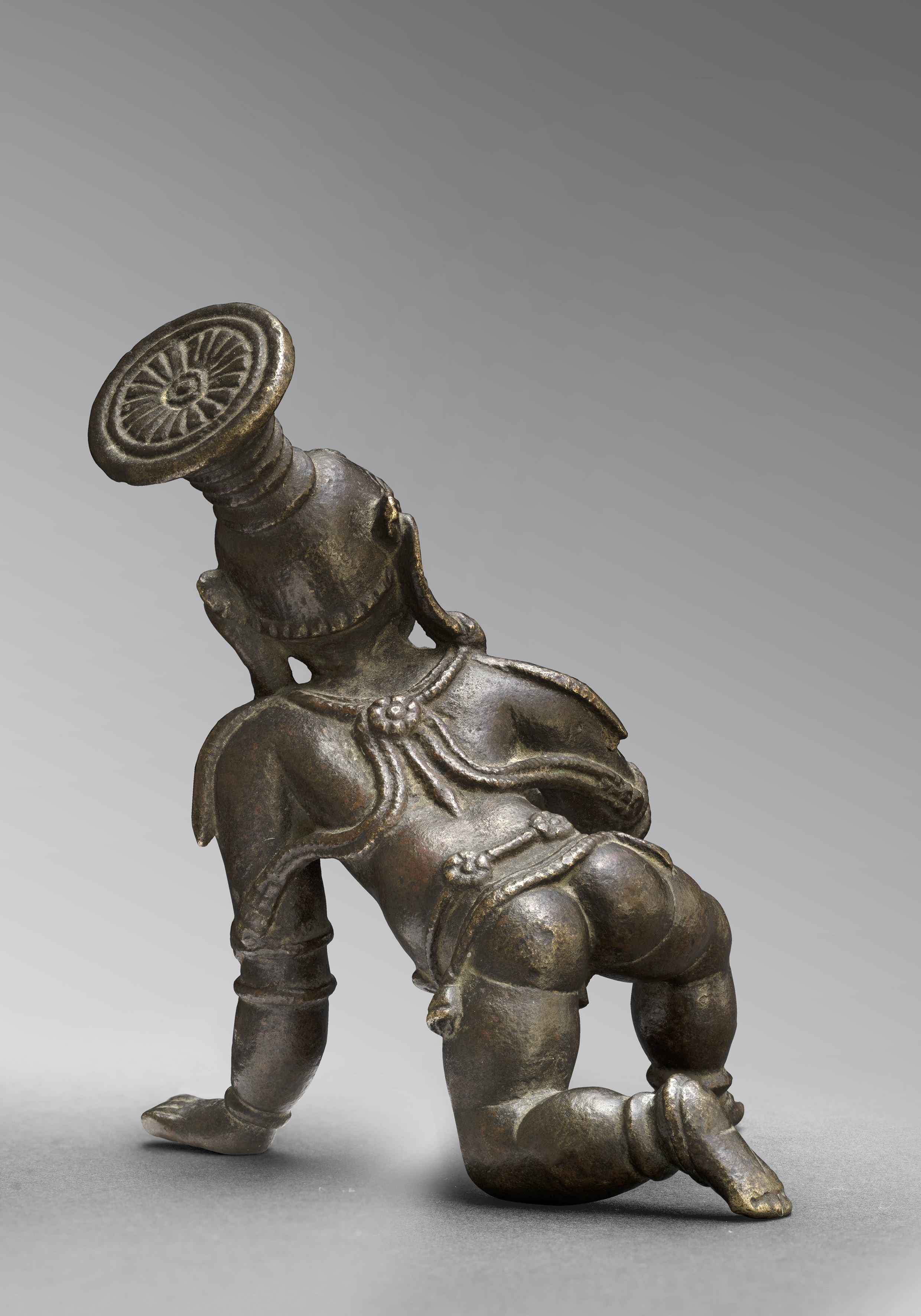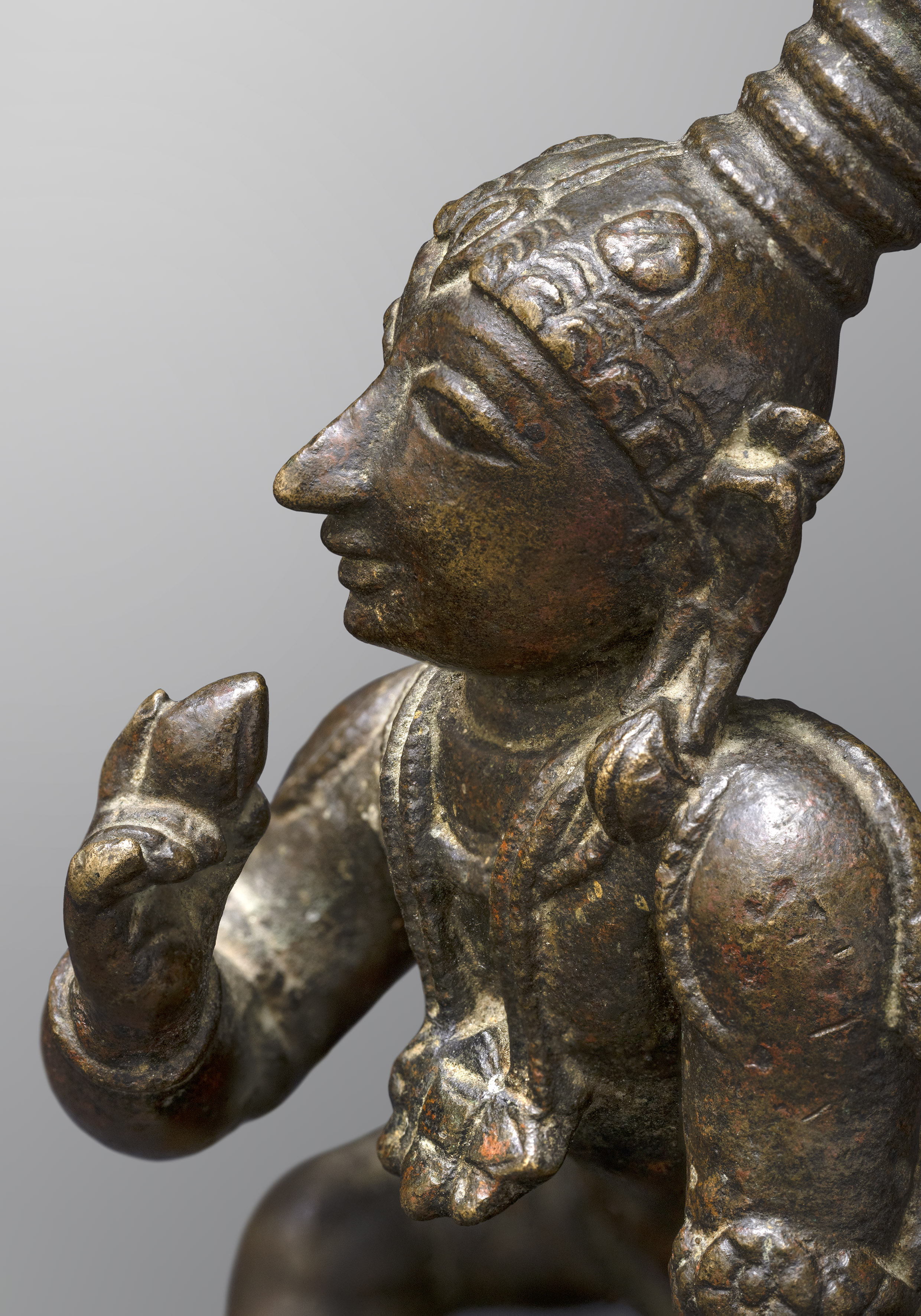

South India, Tamil Nadu
Vijayanagar period, 15-16th century
Bronze
H 8 x L 8 cm
Krishna is depicted as a crawling infant, his right hand raised to the front, holding a butter ball. He is wearing a charm box or talisman around his chest to protect him from evil. His hair is drawn up in a distinctive headdress characteristic for the Vijayanagar period (14th-17th Centuries). This type forms part of the costume for the Kathakali dancers of Kerala. The headdress is cast with a beautiful floral design to the top. He is adorned with a chest band, a waist band, a necklace, floral bracelets, long earrings, anklets and other jewellery. The figure shows a splendid patina and is beautifully cast with an expressive face with large almond-shaped eyes and lavish hair ornaments. He is naturalistically modelled with the buttocks and legs well articulated.
Krishna is crawling to escape his foster mother Yasodha. This theme is very popular throughout India and most of the bronzes of this type are small as they are meant for domestic shrines. It is almost a must for Vaishnavites (Hindu’s who worship primarily Vishnu) to have one of these images on their altar.
Compare for a similar example in Indian sculpture, Pratapaditya Pal, Vol 2, A catalogue of the Los Angeles County Museum of art collection, 1988, figure 159a-b, p 294.